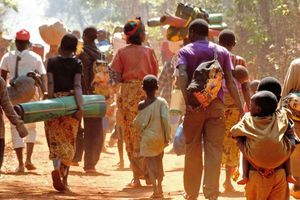Need for youth-friendly health services

There is growing evidence that effective adolesence fdriendly services can increase health seeking behaviour. PHOTO|COURTSEY
What you need to know:
- Due to this, little investment has been put into this life period—a time between when puberty begins and during which a young person develops into an adult.
- It’s usually a time of opportunity for the youth but it is the one full of health and social risks.
Through experience, I have learnt that the concept of “adolescence” is not really understood in Tanzania, let alone its transformative potential.
Due to this, little investment has been put into this life period—a time between when puberty begins and during which a young person develops into an adult.
It’s usually a time of opportunity for the youth but it is the one full of health and social risks.
Adolescence presents a window of opportunity because most actions taken during this period could set the stage for healthy adulthood.
Most adolescents achieve safe transition to adulthood but unfortunately, there are a good number of them who don’t.
Behavioural change during this period could reduce the likelihood of problems in the years that lie ahead, such as the prevention of heart diseases through healthy eating and exercising habits.
It’s also a period of risks; when health problems that have immediate consequences can occur—common being deaths from road traffic injuries, sexually transmitted infections(STIs) and unwanted pregnancies resulting from unprotected sex.
It’s a period when behaviours which could have serious adverse effects on health in the future begin. Take an example of tobacco smoking and alcohol consumption.
Adolescents are a diverse group. For example, a boy aged 12 is at a very different stage of personal development compared to a boy aged 18.
Similarly, there are obvious physical differences between these boys—psychologically and socially—from a girl of the same age.
A boy aged 12; who is fending for himself on the street is likely to be growing and developing very differently from a boy of a similar age who is growing up with a caring and financially secure family.
Even two boys of the same age, growing up in very similar circumstances, may grow and develop differently.
Why adolescents need to grow and develop in good health?
Boosting adolescents’ health has two goals: promoting health and the prevention of health problems (if) and when they could arise.
This also entails the provision of information and skills, creation of safe and supportive environment for provision of services.
At the center of all this, is reproductive health and this is where adolescents need to be well represented by communities around them.
Communities can influence the adolescents’ life—an important aspect in ensuring healthy sexual life.
Despite the above potential risks and vulnerability of this group, some adolescents have always seen no good reason for visiting health facilities.
Adolescents who fall ill due to common conditions such as fever, respiratory infections, malaria and so on, may have no hesitation in seeking care, however, they may be less willing to do so for more sensitive matters.
Due to cultural reasons, some adolescents feel that they may end up in trouble with community members if they report to a health facility with certain problems.
They fear the burden of scrutiny when they are faced with sexual health problems such as STIs or an unwanted pregnancies.
This fear makes them deal with sensitive health issues in secrecy; however, this also poses a serious danger to their life and health.
The biggest concern some adolescents have raised is lack of privacy. They fear health providers will ask them difficult questions and put them through unpleasant procedures.
Why invest in adolescents’ health?
Behaviour and life styles are learned and adopted during adolescence and influence health in both present and the future life.
Today’s adolescents are tomorrow’s parents and what they learn today will most likely be transferred to their children.
Returns on investment made in childhood will be safeguarded by paying more attention to adolescents’ health and wellbeing.
Better prepared adolescents and healthy adolescents will result in more productivity gains and a healthy workforce.
How communities can invest in adolescents?
Understanding the complexity of this transitional period (adolescence) is very essential.
Adolescents need to live in a transparent and nonjudgmental environment. This enables them to have healthy practices and behaviour.
But, this requires engagement of the entire community, health care providers and policies to suit their needs.
If the health care system is struggling to provide “adolescent friendly services” the community, needs to understand.
The community should know the fact that the adolescents’ role in influencing health seeking behaviour is of immense impact.
Policies and political statements can impact adolescence both negatively and positively, hence it is vital for them to understand the complexity of adolescent needs.
There is growing evidence that effective adolescent friendly services can increase health seeking behaviour hence healthy adolescent practices and eventually healthy adulthood.
This calls for allied efforts from all sectors to invest in adolescent health and needs such as adolescence and comprehensive sexuality education in schools, the legal sector with laws that understand the need of adolescents.
Investing in adolescence and adolescent life seems to answer many questions in health access, economic, social and cultural well-being.
Having stable adolescents means stable future generation. It will also mean reduced teenage/ early pregnancies, sexual transmitted diseases including HIV.
The author is a medical doctor dealing with reproductive health at Marie Stopes.




